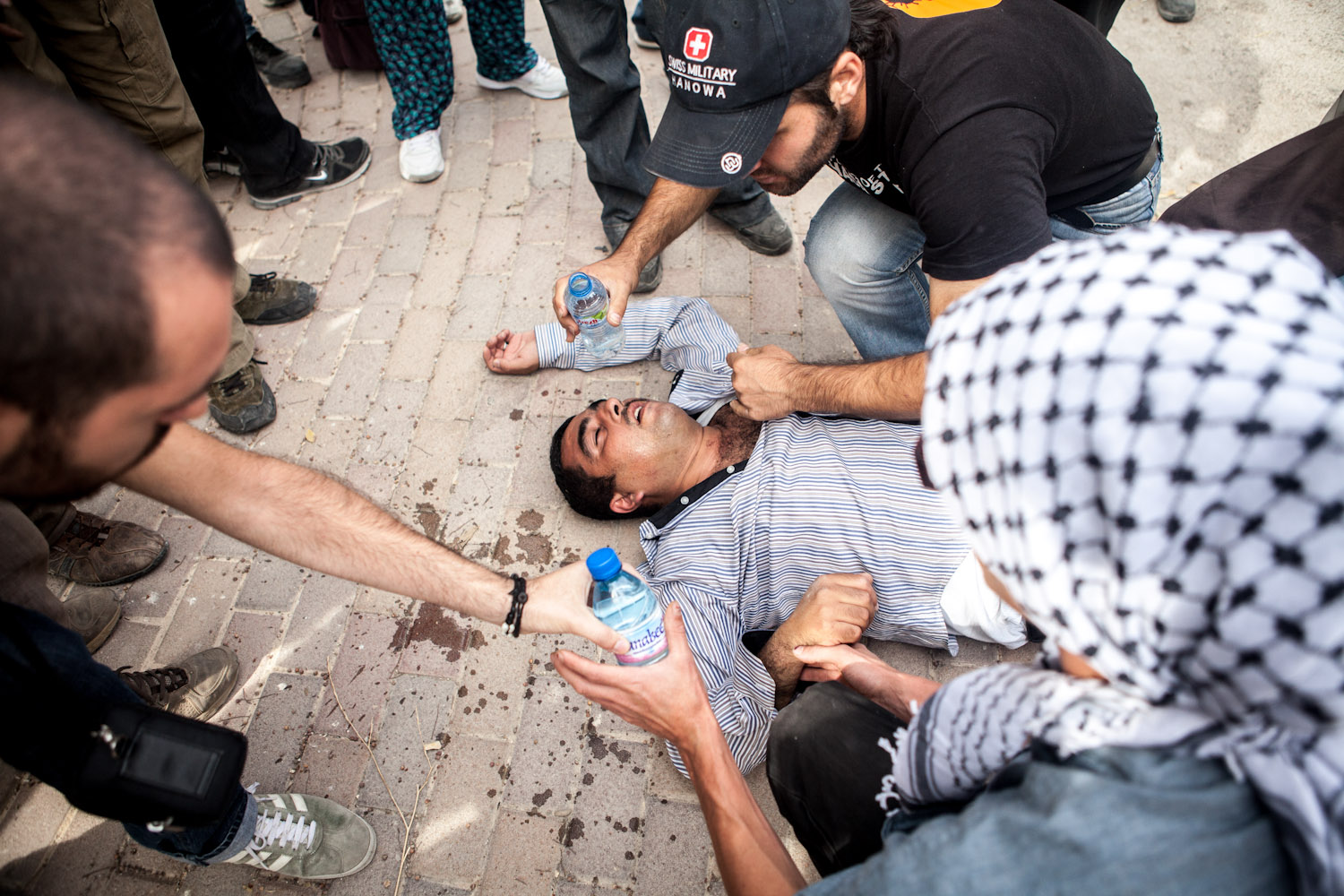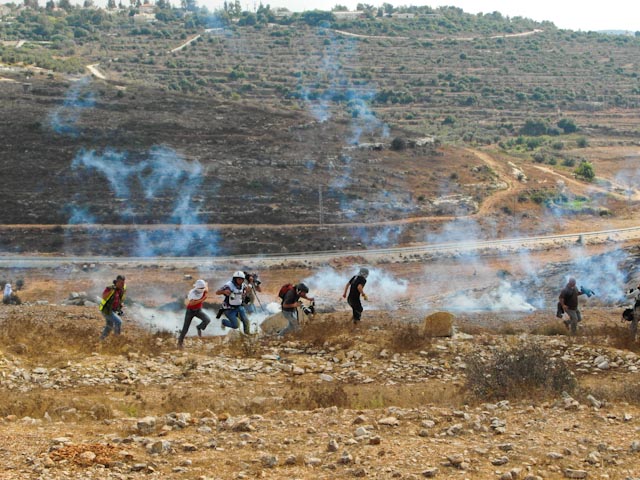Tag: An Nabi Saleh
-
Palestinian youth arrested and 4 detained at Nabi Saleh weekly demonstration
By Naseem Roberts 2nd November 2012 | International Solidarity Movement, West Bank One Palestinian Youth was arrested and four others: two Israelis and two internationals were detained during the Friday non-violent weekly demonstration in Nabi Saleh. People from the village met in the main square of the village from 11:30am onwards. At 12pm the demonstration…
-
Bassem Tamimi injured and arrested with 3 others at Boycott Israel protest
24 October 2012 | International Solidarity Movement, West Bank VIDEO from the action: Dozens of Palestinians and internationals protest at Rami Levy Supermarket near the illegal settlement of Sha´ar Benyamin on October 24th. This direct action aims to highlight the Boycott-Divestment-Sanctions (BDS) Campaign that seeks to promote a boycott of Israeli goods. Four people, including…
-
Teenager Injured By Tear Gas Canister at Weekly Protest in Nabi Saleh
By: Naseem Roberts 06 October 2012 | International Solidarity Movement, West Bank


